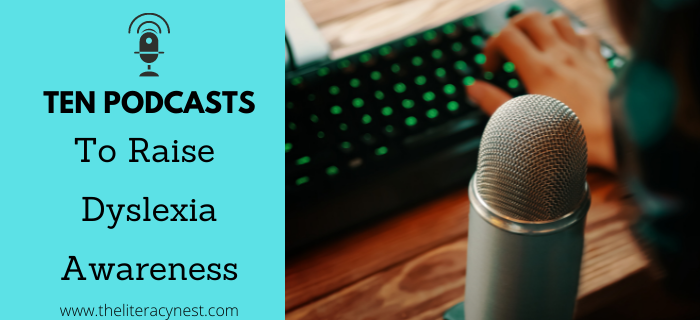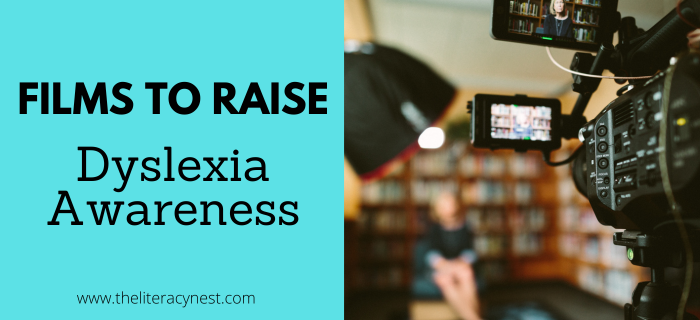Tips for Teaching Self-Advocacy Skills
At some point in our work with students, we find a need to begin to teach our students to advocate for their own needs. This becomes increasingly important as students move into middle school and beyond. Teaching self-advocacy skills to someone with dyslexia involves empowering them with the knowledge, skills, and confidence to understand their learning needs, communicate these needs effectively to others, and seek out resources or adjustments that aid their learning. This is an ongoing and complex skill.

Here are Tips for Teaching Self-Advocacy Skills:
1. Build student understanding of dyslexia.
- Help them understand what dyslexia is, including its neurological basis, common challenges, and misconceptions. Knowing that dyslexia does not affect intelligence can be incredibly empowering.
- Work together to identify their specific strengths and challenges. Understanding their unique profile of strengths and challenges is crucial. Dyslexia often comes with strengths in problem-solving, creativity, big-picture thinking, and spatial reasoning.
2. Build self-awareness and confidence.
- Encourage activities and hobbies where students excel, to build confidence that can transfer to challenging tasks.
- Encourage self-reflection and help students recognize situations where they feel most comfortable learning and where they face difficulties. This self-awareness is key in advocating for their needs.
For more tips on building self-awareness, listen to season three, episode five of the Together in Literacy podcast, Using Your Gifts in Your Own Way to Make an Impact in this World with Erika Lopez.
3. Instruct students on their legal rights and available resources.
- Make students aware of their legal rights under education laws and workplace accommodations.
- As students get older, it is important for them to know where to go for support. Guide them towards resources and support networks for people with dyslexia, such as local or online support groups, educational therapists, and relevant technologies (e.g., text-to-speech software).
- Encourage connections with peers and mentors who understand dyslexia. Peer support can be incredibly validating and informative.
- Introduce them to professionals who can support their learning and advocacy, such as educational psychologists, tutors specialized in dyslexia, and counselors.
4. Teach specific problem-solving and advocacy strategies.
- Help students develop strategies for dealing with setbacks and advocating for themselves. This can include knowing who to talk to, how to escalate issues if necessary, and how to negotiate for accommodations.
- While support is crucial, gradually encourage them to take more responsibility for their learning and advocacy, to build independence.
Looking for more strategies to build independence? Watch Using A Visual Schedule!
5. Instruct students in the use of assistive tools and technology.
Introduce students to assistive technology designed to help with reading and writing. Tools like speech-to-text and text-to-speech software can be game-changers. It is important for students to receive direct and explicit instruction on how to use these tools.
6. Provide ongoing support, feedback, and a sounding board.
Learning to self-advocate is a process that takes time. We practice a model of gradual release of responsibility. This takes time and practice. Regular check-ins can help them refine their strategies and boost their confidence.
7. Teach communication skills necessary to communicate effectively about dyslexia and their needs.
- Teach students how to clearly and confidently express their learning needs and the specific accommodations that help them, such as more time for tests, quiet spaces, or the use of technology. Understanding dyslexia, including how it affects them personally will empower students to explain their needs to others. Practice summarizing this information in a way that’s concise and easy for others to understand.
- Practice self-advocacy language. Develop and practice scripts for requesting accommodations or discussing their dyslexia with teachers, employers, or others. It’s important to communicate confidently and assertively, not apologetically. Rehearse scenarios where they might need to explain their dyslexia and request accommodations, such as in a classroom or workplace setting. Role-playing can help reduce anxiety around these conversations. Students should be positive and proactive and adopt a collaborative tone.
- After requesting accommodations, students should learn to follow up to ensure they are implemented. If accommodations are not effective, communicate this and work towards a solution.
- Acknowledge that self-advocacy can be emotionally and mentally taxing. Encourage students to engage in activities that reduce stress and support their well-being. Not every request for accommodations or support will be met with understanding or acceptance. It’s important for them to persist and, if necessary, escalate their requests through the appropriate channels. Regularly reflect with students on what’s working and what isn’t. Self-advocacy is an ongoing process that might require adjusting their strategies as they encounter different environments and challenges.
Teaching self-advocacy to someone with dyslexia is about empowering them with the understanding that they have the right to access the same opportunities as others, just sometimes in different ways. It’s a journey that requires patience, understanding, and encouragement. Self-advocacy is a powerful tool for navigating the challenges of dyslexia. With practice and persistence, self-advocacy can lead to more equitable access to education and employment opportunities.
Download our printable sample scripts to practice these different situations with your students.
The following books are great resources with more information on teaching self-advocacy to young people.
- Speak Up for Yourself (A Story Teaching Children Self Advocacy) Although Amelia is confident in standing up for others when she finds herself with a problem at school, she has difficulty advocating for herself. With the support of her mother, she learns 4 simple steps to help her learn to ask for what she wants and needs. The author is a school counselor and emphasizes the skill of learning HOW to ask. This book is aimed at K-5 students.
- Self Advocacy for Kids: A Step-by-Step Guide to Helping Your Child Become an Independent, Confident, and Self-Sufficient Person This book is aimed at helping tweens develop self-advocacy skills. It is probably most effectively used with parents or mentors and children together as it is a bit abstract for the child to use independently.
- I Can Do Hard Things: Mindful Affirmations for Kids This beautifully illustrated book reflects the diversity of our world. Children are likely to see themselves reflected as they learn to use mindful affirmations and tap into their inner strength. Young children learn the importance of positive self-talk.
- Advocacy ABCs: An Elementary Guide to Self-Advocacy Achoo the Owl introduces advocacy to young children through rhyme in this delightful alphabet picture book.
- Stick Up for Yourself!: Every Kid’s Guide to Personal Power and Positive Self-Esteem This book for tweens is very approachable and interactive. It includes writing activities and relatable examples for kids to learn skills and strategies to deal with both adults and other children with confidence.
Looking for more ways to address metacognition? Read Top Resources for Teaching Kids about the Brain.
This Back-to-School FREEBIE is perfect for the first week of school! It will help you to gauge your new students’ level of stress and anxiety for classroom and learning tasks. It can be used across a wide range of grade levels.
Grab yours in The Literacy Nest Shop!
Are you looking for professional development that will help you better support your students with dyslexia? The Literacy Nest has a membership for that…
Building Readers for Life Academy is a monthly membership program that empowers educators AND families. It dives into structured literacy and strategies for ALL learners. With BRFL Academy, you’ll learn what it takes to help EVERY student become a reader for life.







